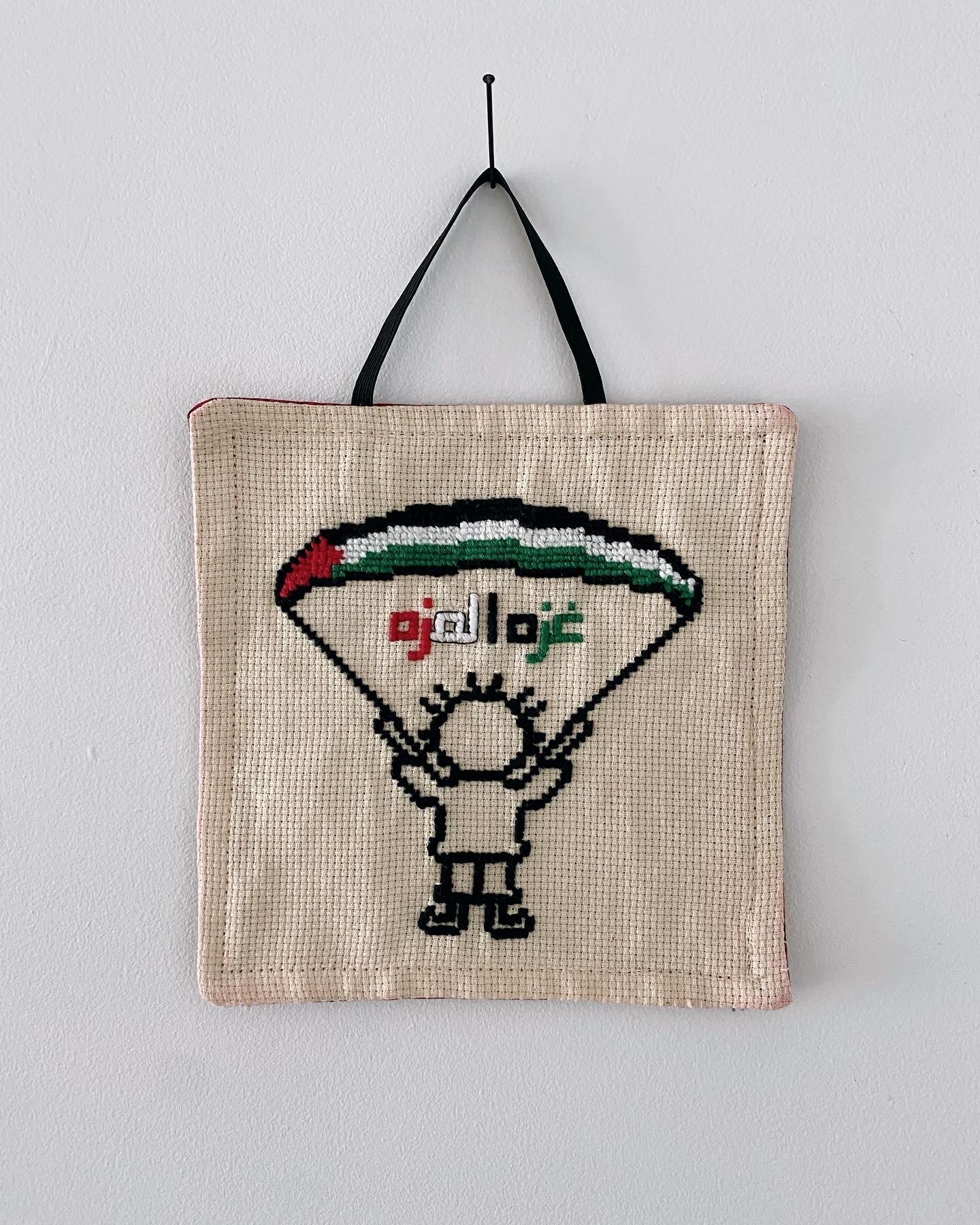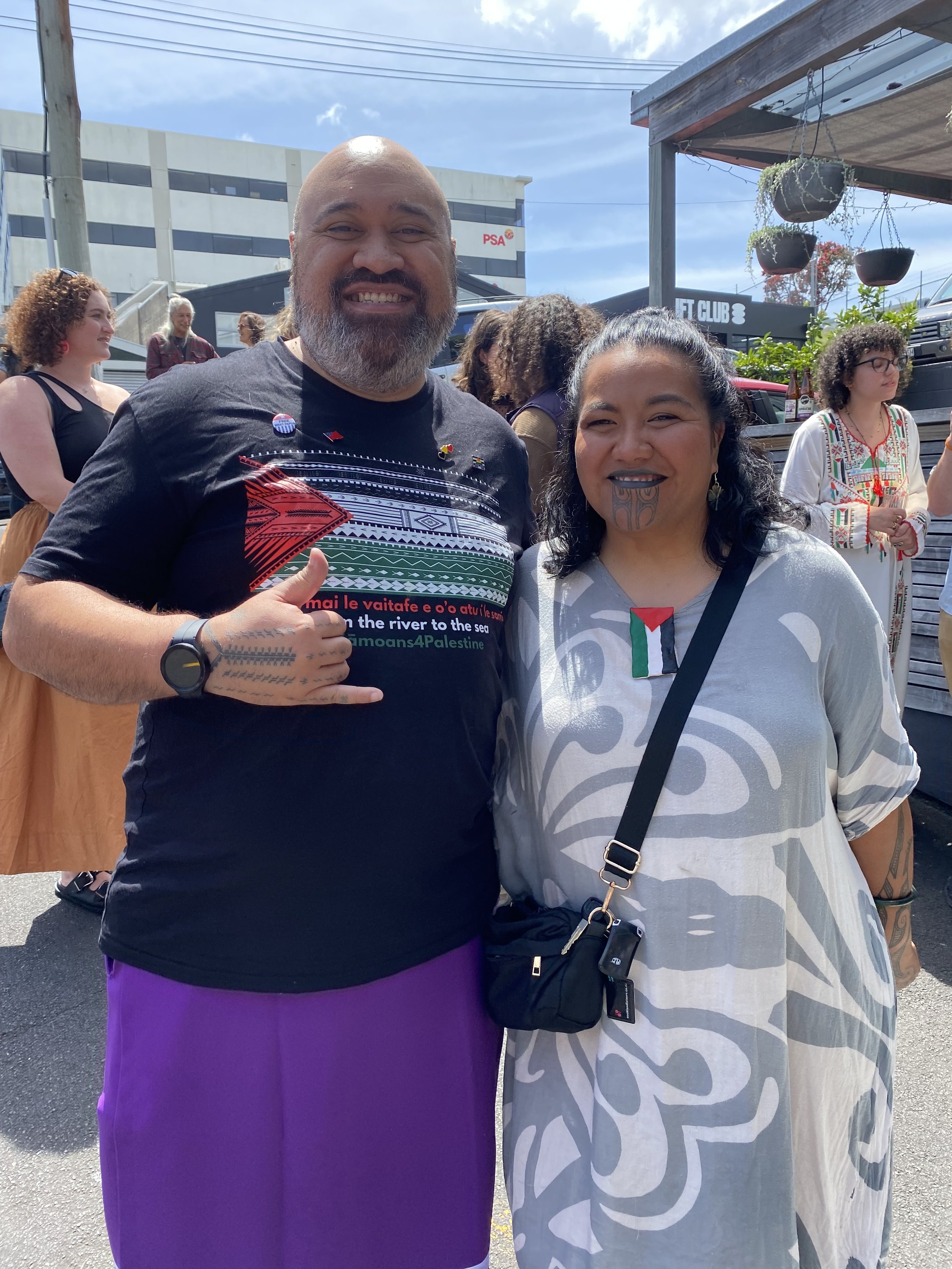MAKE ART NOT WAR
FROM THE RIVER TO THE SEA
13 - 24 Dec 2023
mothermother and LOT23 are honoured to host two art projects calling for a permanent ceasefire in Palestine
MAKE ART NOT WAR
Organised by our Palestinian community
A participatory art installation to create paper cranes for all people who have lost their lives during the current crisis. Cranes will be made until there is a permanent ceasefire.
An origami crane is a Japanese art form called a Senbazuru. Traditionally, it was believed that if one folded 1000 origami cranes, one's wish would come true. It has also become a symbol of hope and healing during challenging times.
This public art project calls for an immediate ceasefire and is supported by: Palestinian Youth Aotearoa (PYA), Dayenu: New Zealand Jews Against Occupation, Artists4Ceasefire and Anu Healing Art Movement.
FROM THE RIVER TO THE SEA
An exhibition of Palestinian artists curated by Kūwao Space
Photographs by Belal Khaled (Palestine)
Projection by Monna Jabali (Palestine)
Digital Print, cross stitch pattern by Maya Amer (UK)
Paintings by Heba Shammout (Tāmaki Makaurau)

































BELAL KHALED
Untitled Photographs, Oct 2023
Growing up in besieged Gaza, Belal Khaled is a Palestinian “calligraffiti” artist and activist who has been a pioneer in modern calligraphy styles, and demonstrated the power of art as a means of communication and connection, even in the face of adversity. Among his many creations is “Childhood Besieged,” Palestine’s largest mural and is known for painting a range of objects from cars and bags to a missile which fell on a home in Gaza. He co-founded the Gaza Graffiti Team and also works as a photographer in conflict regions.
These photographs are only a small selection of images captured by Belal since October 2023, as Belal remains on the ground in order to document the ongoing genocide by Israel and its allies in the Gaza strip. His proximity to the horrors being endured in Palestine over
these last months maximises the impact of his works which give a raw and human perspective of life on the ground. Sitting at the intersection of documentation as a service for posterity and photography as an artform, each of these images is a haunting reminder
that the reality which Palestinians are facing, and have faced for seventy-five years, is more dramatic and disturbing than any cinematic depiction could attempt to portray.
The presence of children in these images reflects the demographic most affected by the violence. Prior to this genocide, half of the population of Gaza were children, who now make up over seventy percent of those killed - the average age overall being five years old. Many of the children who have survived so far are orphaned, grievously injured, and changed forever by the atrocities imposed upon them.
This exhibition opens in the midst of one of the greatest humanitarian crises of our time, where all consideration of international laws have been shunned for greed and racist intent, where geopolitical stalemates have resulted in a deafening silence across the
parliaments of the world. On the other hand, however, thanks to the work of Gazan journalists such as Belal Khaled, the global community who believe in humanity have rallied together to express their disgust. We stand at the precipice of a moment in history where the many can prove to the few who hold office that the power belongs to the people and there can no longer be injustices carried out in our names.
MONNA JABALI
Resilient Remnants: The Lichens of The Mamilla Cemetery, 2022
“In my exploration of the Mamilla Cemetery and the growth of lichens upon its ancient graves that date back centuries, I delve into a mesmerising intersection of nature's resilience and the remnants of human memory. The allure of lichens and the enigmatic presence of the graves have inspired a visual exploration that transcends the historical and political narratives of the Mamilla cemetery. This project seeks to unveil a captivating symbiosis between the organic growth of lichens and the poignant remnants of the graves.
The motivation lies in harnessing the evocative power of this intersection, where the tenacity of lichens intertwines with the melancholic beauty of decay. Lichens, delicate and intricate, serve as a metaphorical embrace, delicately veiling the graves with a silent promise of preservation. Lichens, the resilient symbiosis of fungi and algae organisms that live in a mutually beneficial relationship, become the embodiment of nature's enduring presence in the face of human transience. They form an organic tapestry, a testament to the cycle of life and death, and a reminder of the intricate connections that exist between all living things. Their vibrant hues and intricate patterns breathe life into the weathered surfaces, transforming the forgotten into a vivid testament to the passage of time.
These organisms can colonise a variety of surfaces, including stone and concrete, they thrive in harsh environments and adapt to changing conditions and very slow growing organisms. The graves provide a suitable substrate for lichens to establish themselves, offering a combination of shelter and moisture. Over time, as the lichens grow and spread, they contribute to the natural process of ecological succession, gradually transforming the graves into living monuments intertwined with nature's tenacity. In return, lichens offer a protective layer to the graves by creating a barrier against external elements such as weathering, erosion, and biological degradation. Their presence helps to minimise the physical deterioration of the graves, preserving their structural integrity and prolonging their existence over time. Their presence serves as a metaphorical reminder of the resilience and beauty that can emerge even amidst the passage of time and human disruptions. This immersive experience invites contemplation on the cyclical nature of existence, the enduring spirit of resilience, and the profound connection between nature's reclamation and the human journey.
MAYA AMER
Every Stitch Is A Person’, archival digital print of cross-stitch pattern, 2023
Maya Amer, a UK-based Palestinian artist, merges traditional Palestinian culture with digital art. Proficient in motion graphics and illustration, her unique digital works vividly depict the resilience and identity of the Palestinian people. Through vibrant visual narratives and dynamic motion graphics, she tries to bridge the gap between past and present, inviting global audiences to engage with and appreciate the enduring strength and unique identity of the Palestinian community.
This is a digital recreation of traditional dress (thobe) embroidery traditionally worn in Gaza, it replicates the art of cross-stitching (Tatrez) which women have used to decorate their dresses for over 100 years in Gaza. This collar serves as a data visualisation method, representing the number of deaths in the massacres committed by the Israeli army in Gaza during October 2023. The numbers are sourced from the official report by Gaza's Ministry of Health. These figures are increasing exponentially to this day, and will continue to do so until a permanent ceasefire is called along with an end to the occupation of Palestine.
SANIAH NAIM
Embroideries by Saniah and her mother Beverly
Saniah belongs to the Palestinian diaspora, with family from Remal, a neighborhood now under rubble. She shares her name with her siti, her grandmother, who was born in Gaza and was integral to Saniah’s passion for tatreez: Palestinian embroidery. Studying tatreez’s rich history and practicing the craft has deepened Saniah’s understanding of her own Palestinian identity, while also reinforcing her role in the revolution - using needle and thread to preserve her heritage. Primarily self-taught, Saniah also apprenticed under Wafa Ghnaim (@tatreezandtea), who has been a pioneer for tatreez within the diaspora.
Tatreez is resistance, as Palestinian existence is resistant. Resisting occupation; resisting cultural erasure. When Israel banned the Palestinian flag during the first Intifada, Palestinian women took this as a challenge. They embroidered the flag on their clothes, daring the occupation to remove it from their bodies. Standing tall, shouting, "my body is an act of resistance,” also redefined the stereotype of a Palestinian woman, harnessing her strength in the fight for liberation. The tatreez patterns in this piece are from some of the original Intifada dresses, honoring the Palestinian woman and her steadfast strength.
To learn more about Tatreez, specifically patterns from the First and Second intifada, please support Wafa's second publication, "THOBNA: Reclaiming Palestinian Dresses in the Diaspora”.
HEBA SHAMMOUT
paintings
Heba Shammout is a Palestinian woman with years of lived experience. Her painting practice seeks to communicate an unfiltered and raw expression of her lived experience. In her work she weaves themes of feminism, womanhood, motherhood, and spirituality, culminating in compositions of people in thier suffering, joy, and quiet personal moments of togetherness. Her work celebrates the strength of women across time, place and culture, with an honesty and authenticity that is felt in each brushstroke. She aims to empower and inspire through the sharing of stories of women. Her art is concerned with injustices that affect humans, animals and ecology and hopes that her art is way in to discuss the many troubling issues that deeply affect the future of all people living today.
“Born in the year 1948, with the buzz of bullets, the smell of gunpowder, the sound of loudspeakers, and scraps of paper. “Get out of your places, to the deserts, or your fate”.
In the same scene, 75 years later, the grandmother lying under the roof of a building that was dropped by a war missile, from a monster dancing in the air to the tune of the explosion.
Pictures of the dead are in the same scene, granny is embracing the body of her granddaughter, who is in her care since the father was imprisoned by the occupier, accused of freedom. The child‘s mother went out looking for water that ran out,” No water for the Palestinians so let them drink from their blood,” she left, no longer came back, in a trembling voice, Grandmother was asking for relief for her Granddaughter so that she might live the spring of her life, even if lost a leg or amputated an arm.
Who keeps saying that Palestine gave a heart that beats for the weak, that beats for the weak? Palestine, which a novelist called Gassan Kanafani talked about in the novel ‘Returning to Haifa “
“This place you live in is my home, and your presence there is a sad farce that will one day end …….If you want, you can shoot me at this moment, but it is my Home, and I have waited long years to return to it” Text by Heba Shammout to be read alongside ‘Freedom’
